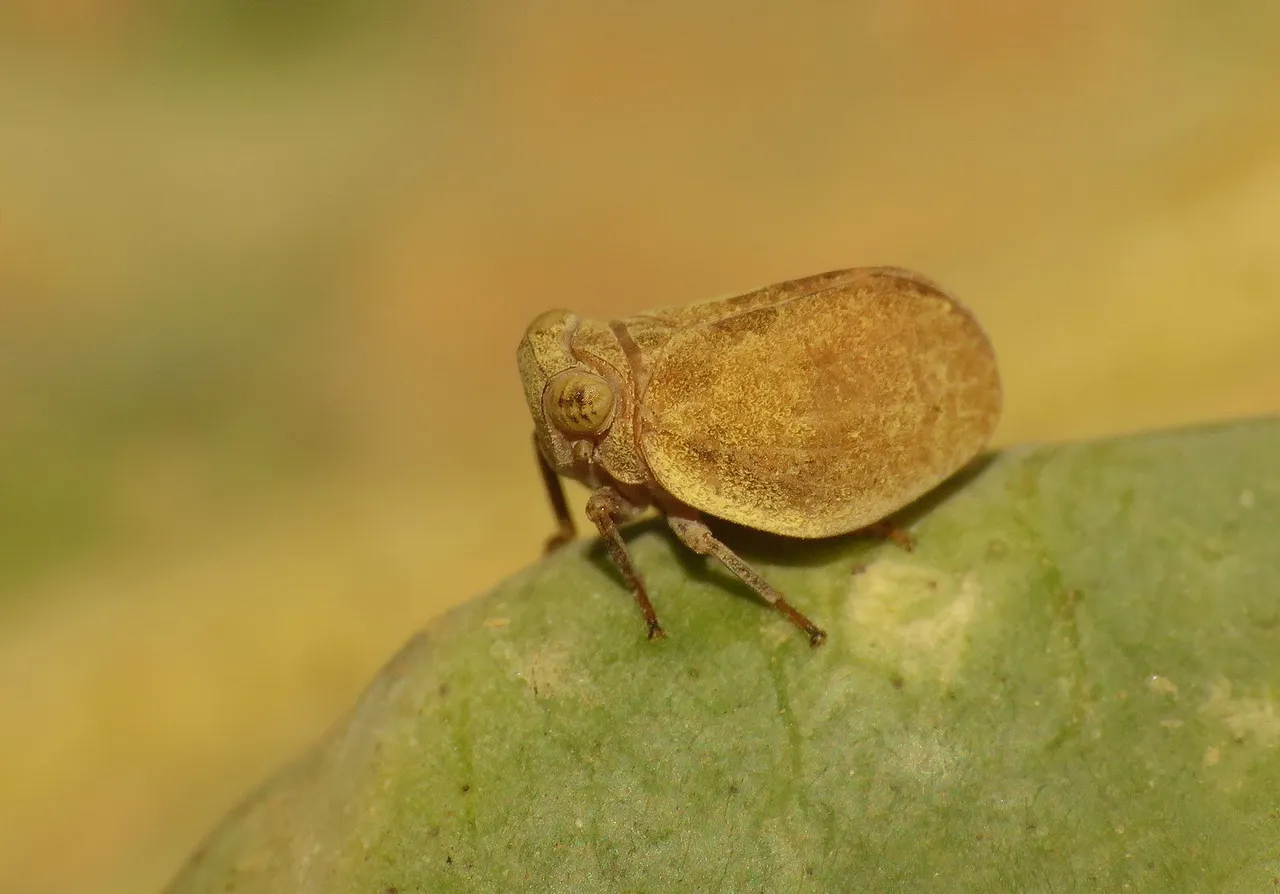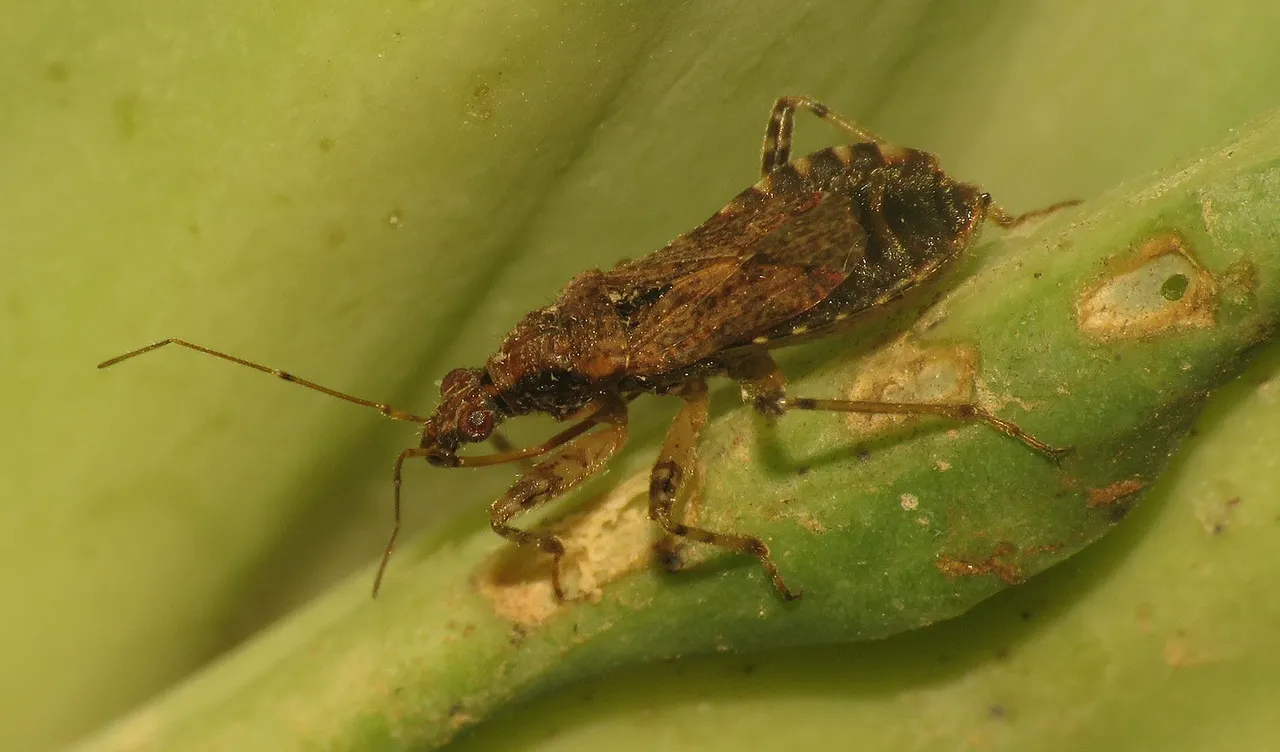The sun just disappeared behind the stuff on the western horizon, the night was almost there, and I was walking across the place that once was a prosperous cabbage field.
Some sparse old cabbages were still standing among the flat weeds, like decaying buildings in the post-apocalyptic landscape.

When I approached one of those green agricultural ruins ...
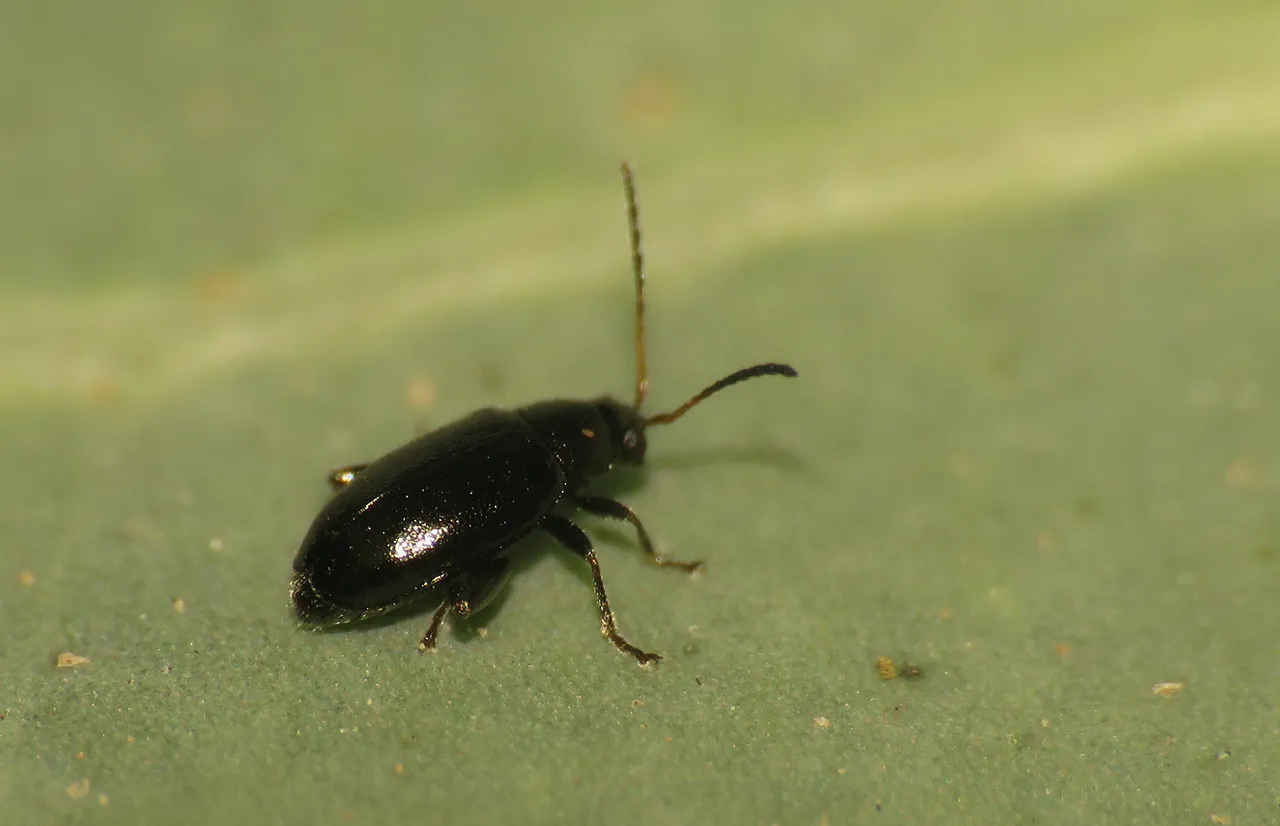
... I noticed a moving black dot on the smooth surface of a thick, juicy leaf ... so I took the snap - on macro lens from the bag and mounted the thing on my camera. A look through those lens revealed a minuscule flea beetle - the Phyllotreta atra.

Another flea beetle, the Phyllotreta vittula, was chewing the border of a neighboring leaf.
The hind legs of these beetles from the Chrysomelidae (leaf beetles) family are strong and enlarged, always ready for spectacular long jumps if the insect is disturbed. Because of the small size and that jumping ability, flea beetles look like normal fleas from a distance.

On the lower part of the same leaf, I found these empty eggshells of the Eurydema ornata shield bug ...
... and on one of the lower leaves of the same plant ...
... I noticed some minuscule green caterpillar ...
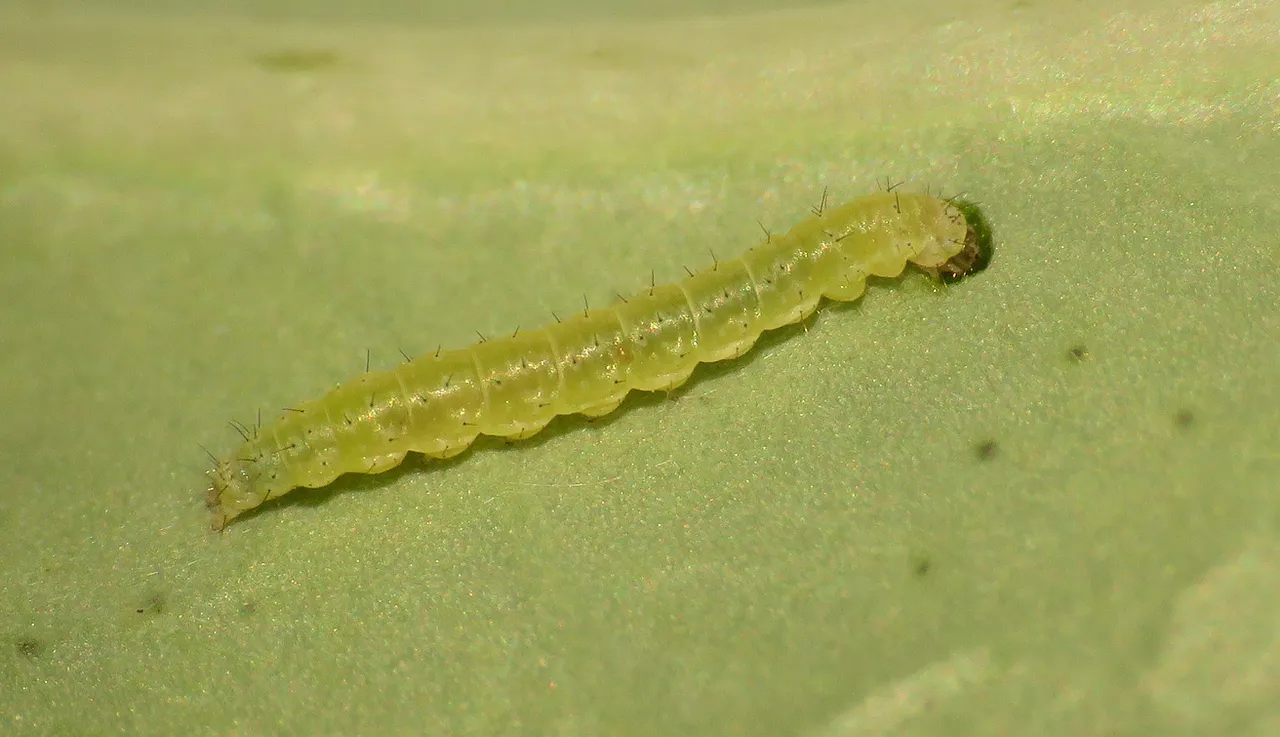
... that was chewing a hole in its center.

This Turnip sawfly (Athalia rosae) was resting at the top of the plant. Adults of this species feed on nectar, but the larvae devour juicy leaves of cabbage and some other related plants from the Brassicaceae family.
When I visited the next cabbage, about ten meters further ...
... I found these small young nymphs of the Eurydema ornata bug ...
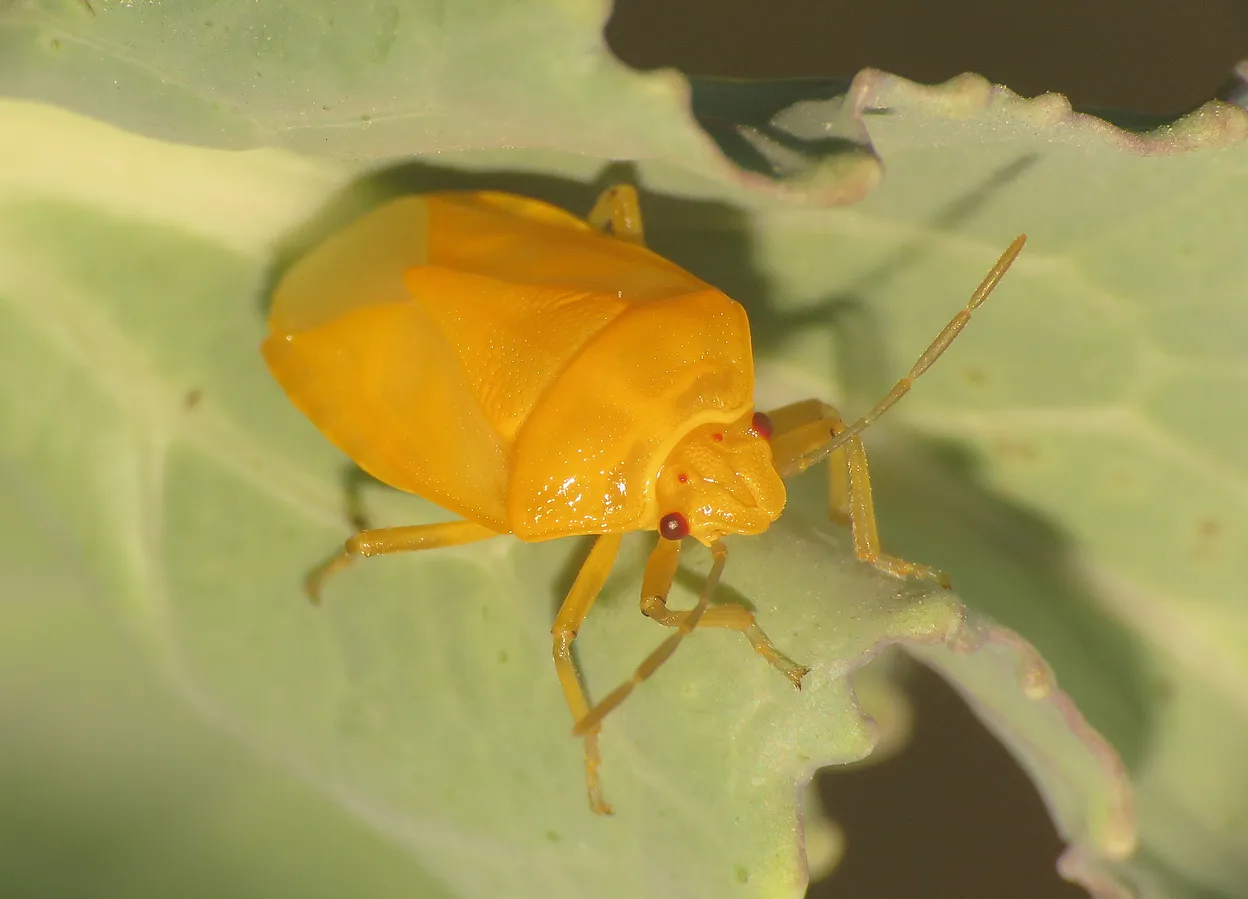
... and on one of the lower leaves, I photographed an adult bug of the same species. Although this is the Eurydema ornata, it doesn't look like one ... because this insect just shed its old exoskeleton and the real colors and markings will appear in the next hour or so.
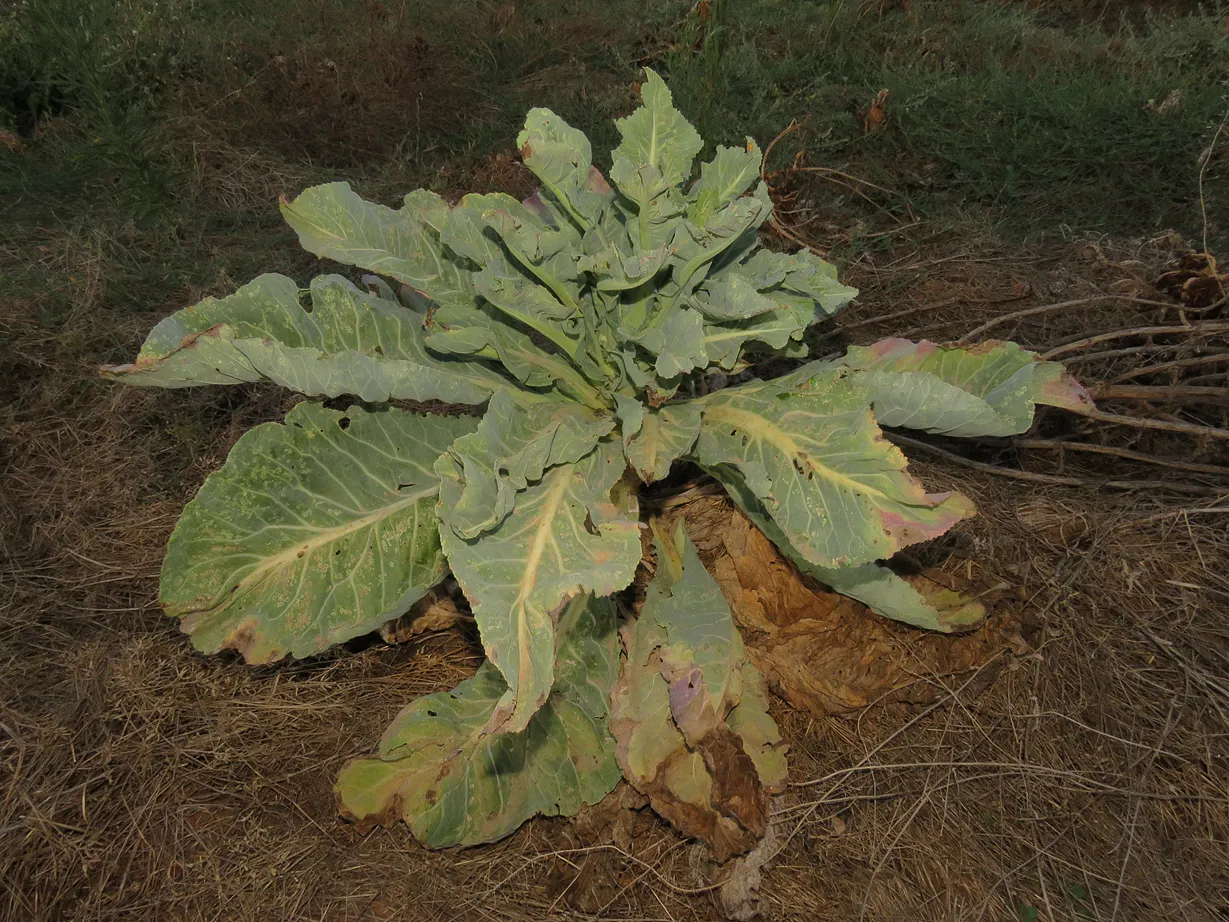
On another leaf, at the top of the plant ...
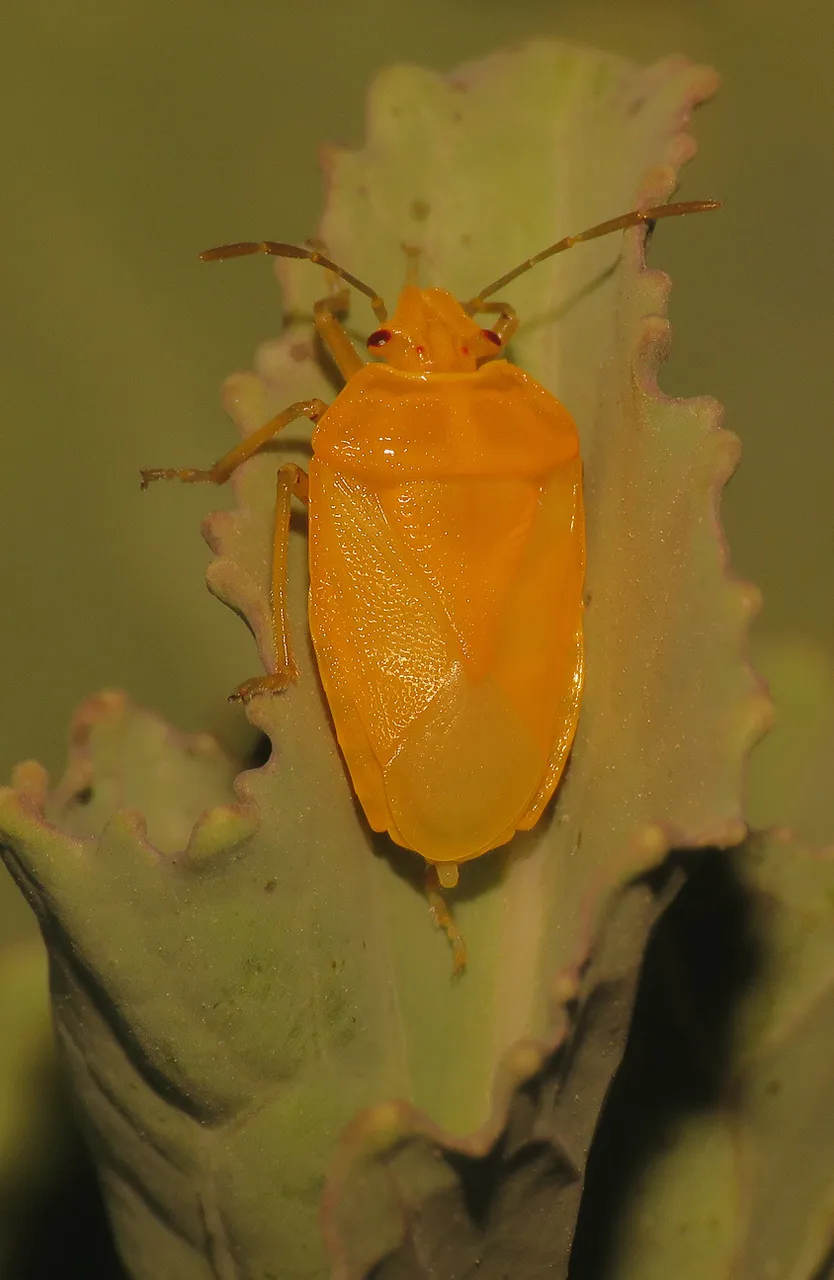
... another bug was going through the same process.
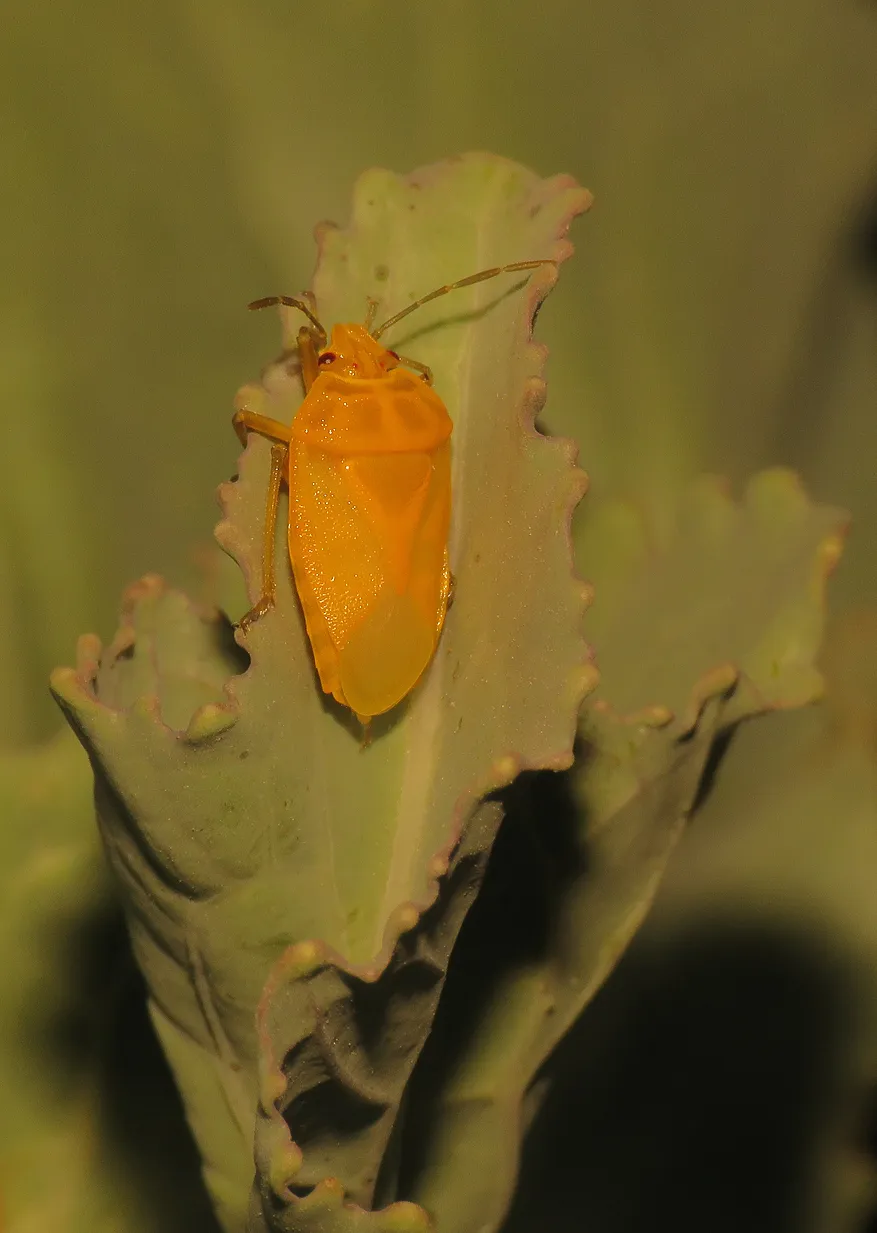
On this one, the first signs of darker markings were visible ... I mean, barely visible. After taking this shot ... as the day was getting dark ...
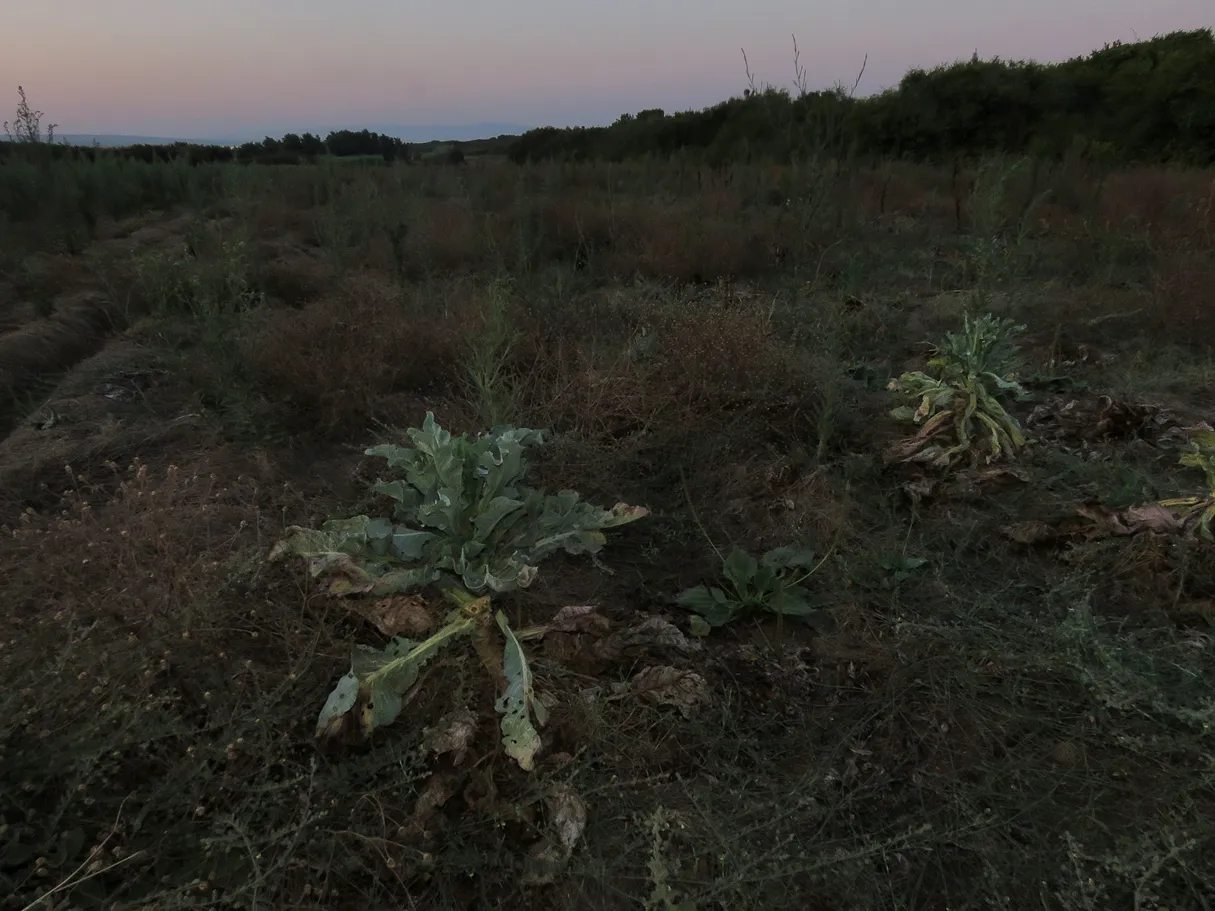
... I continued sniffing around the field in search of interesting insects.
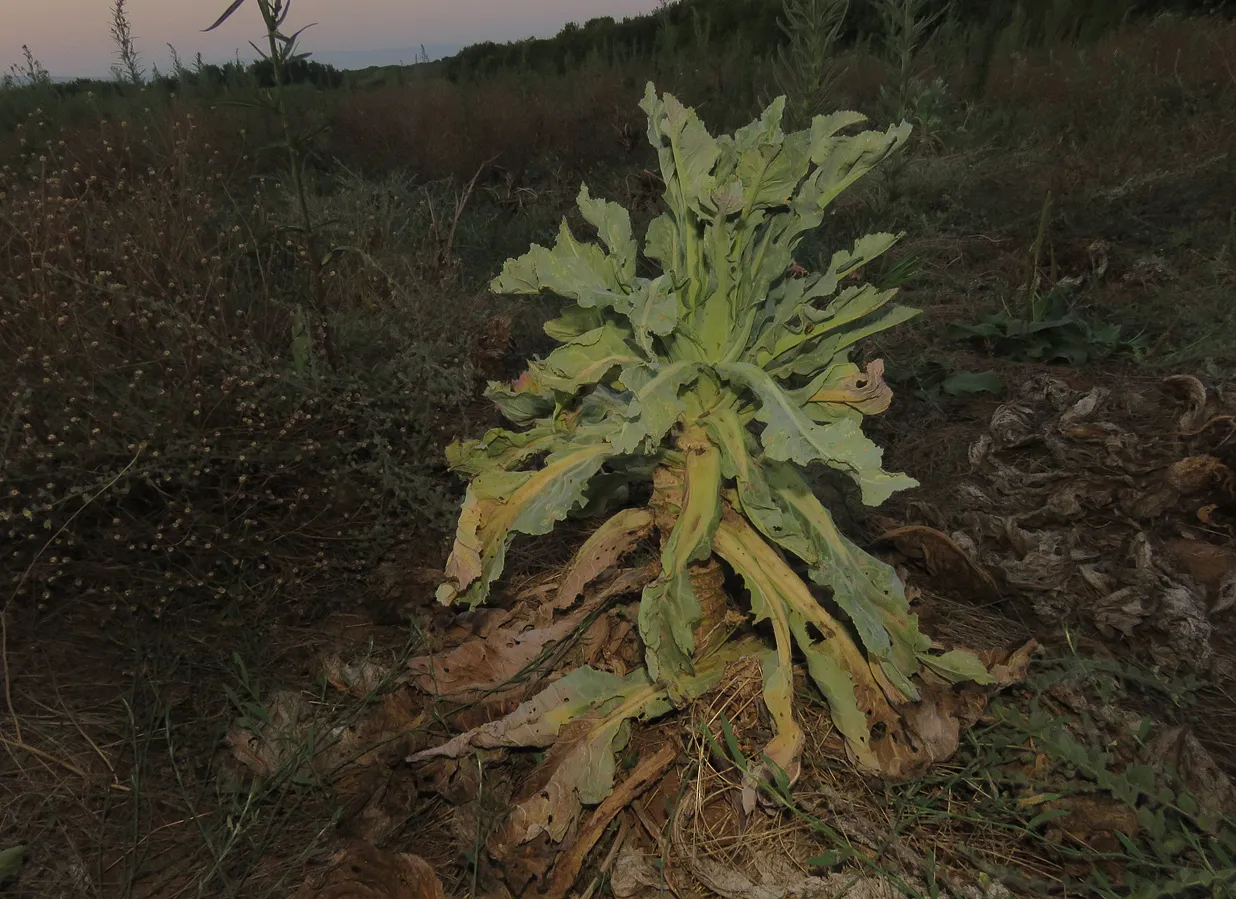
On the third cabbage, I found just one beetle ...
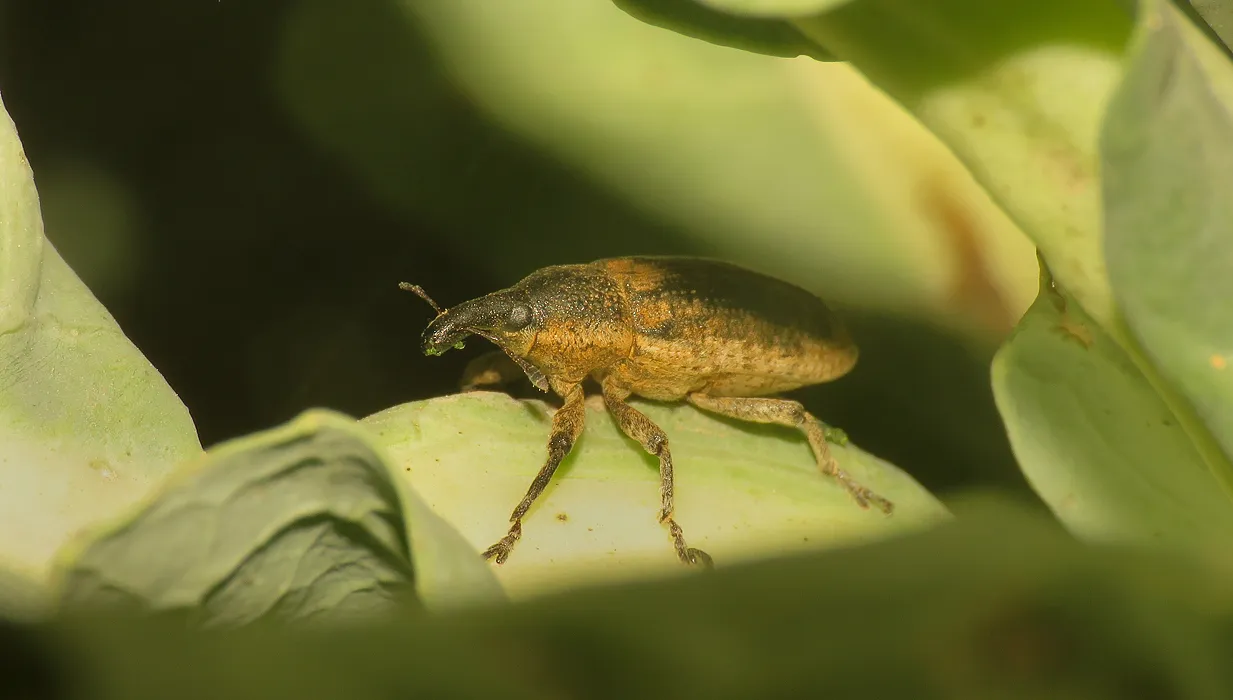
... a weevil ...
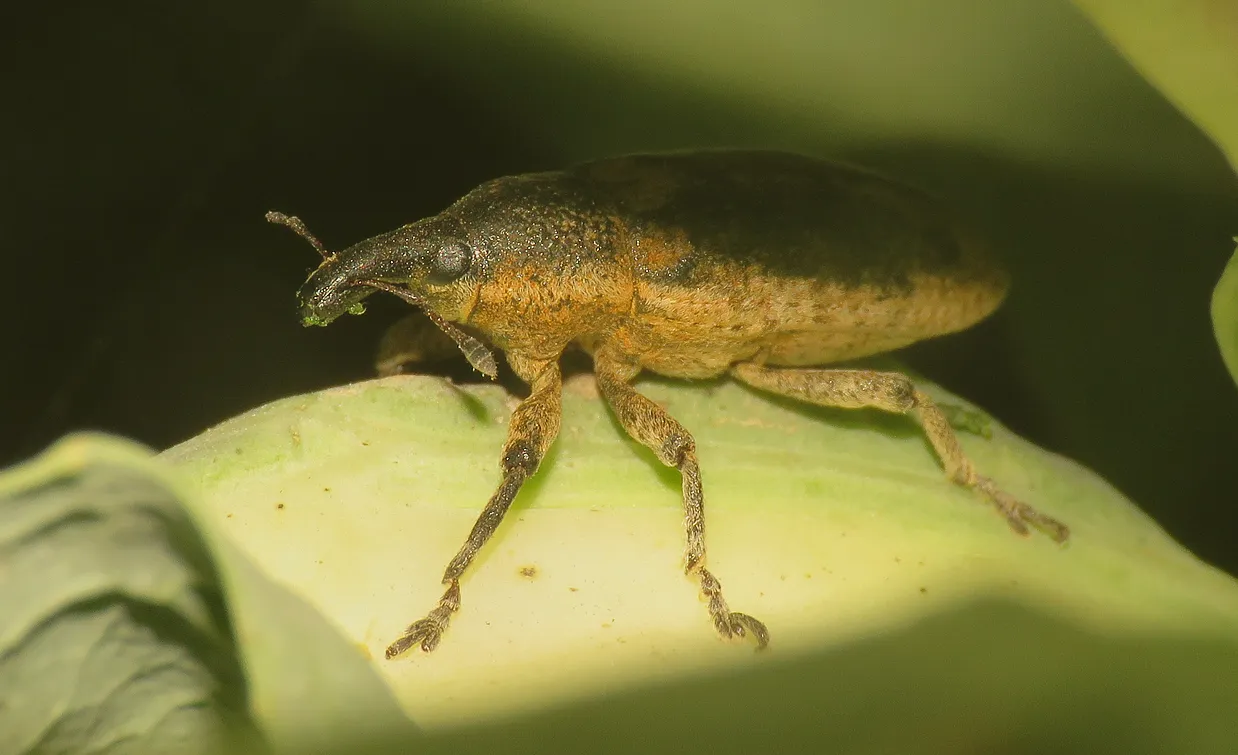
... the Lixus angustatus from the Curculionidae family.
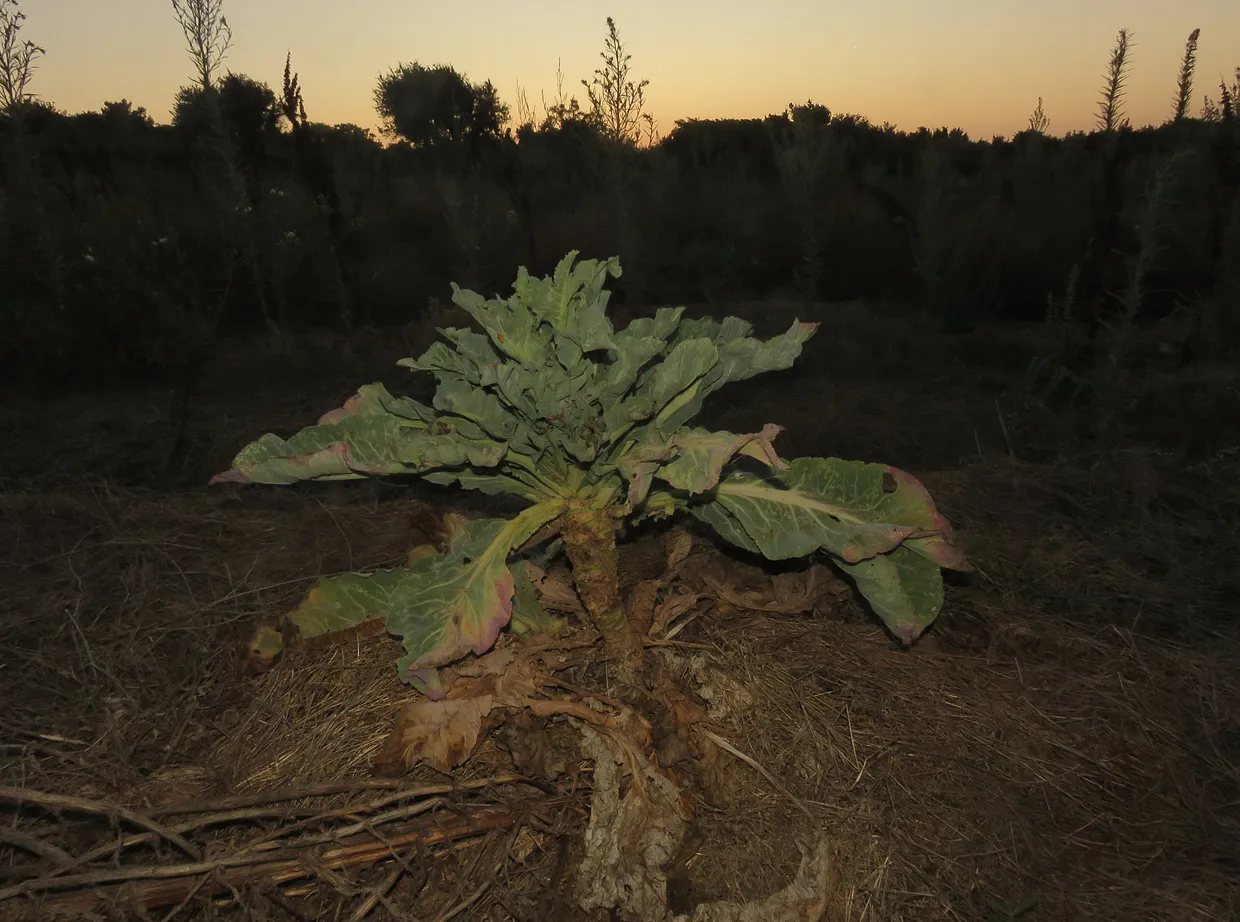
On the next cabbage ...
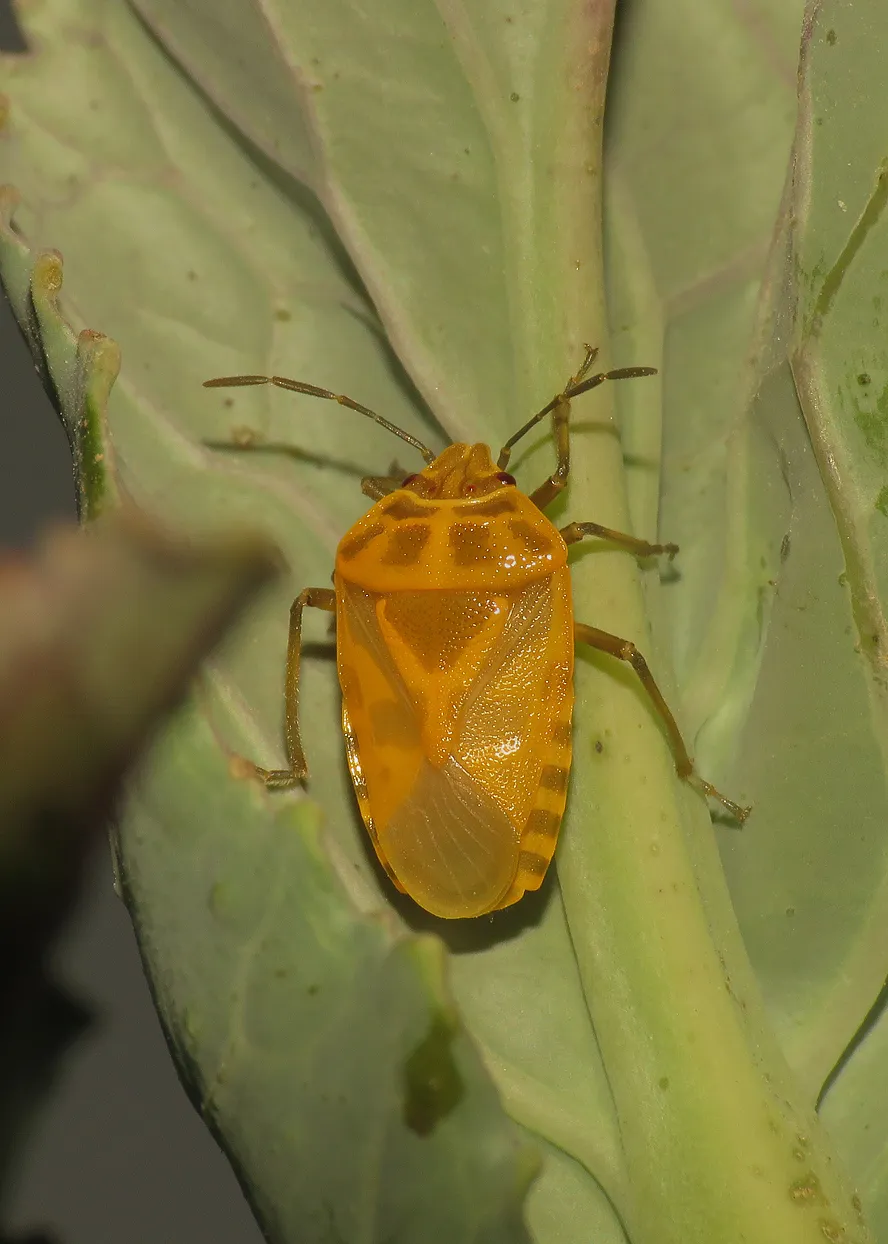
... I found yet another Eurydema ornata that got out of its old exoskeleton recently ... but on this one ...
... the distinctive markings were clearly visible.
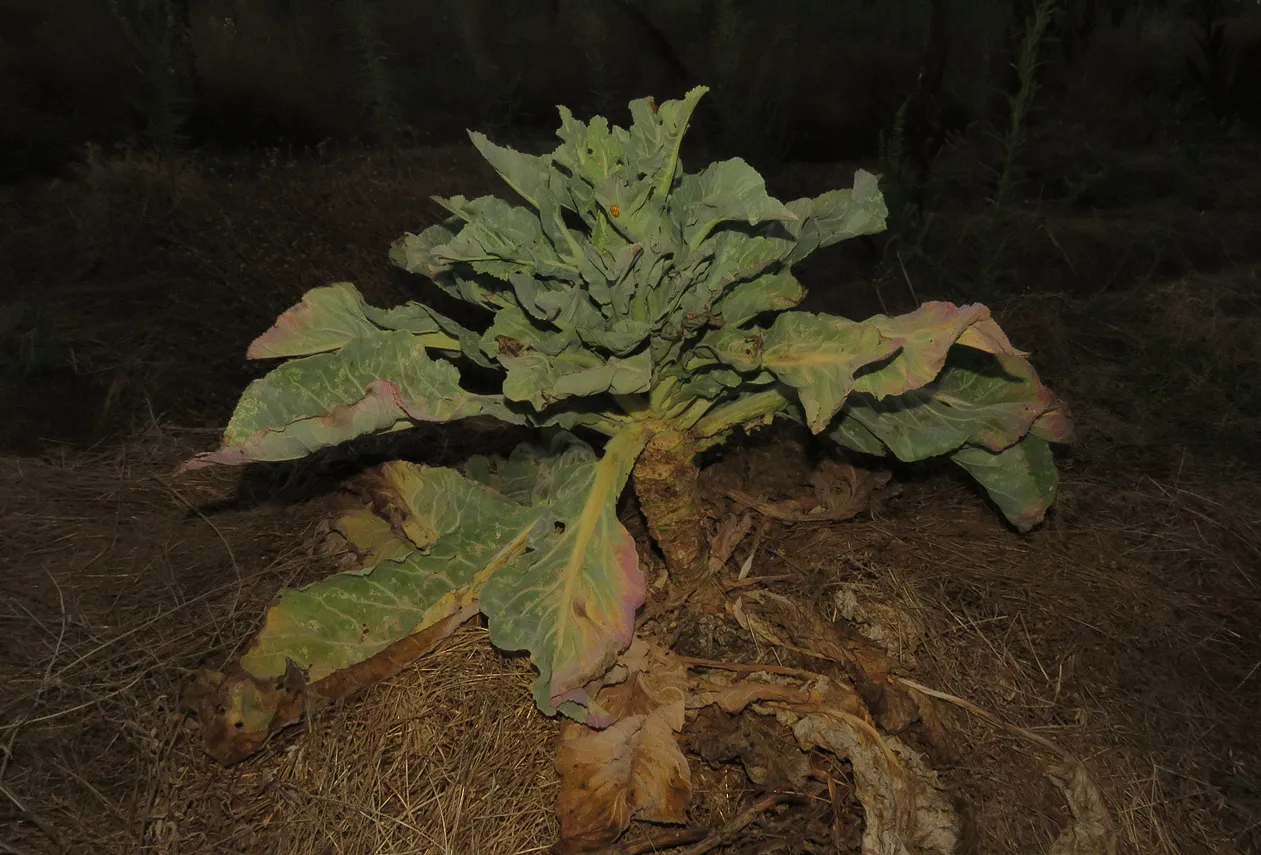
Near to the ground, on one of the lower, partially rotten leaves of the same cabbage ...
... I photographed this planthopper, the Agalmatium bilobum.
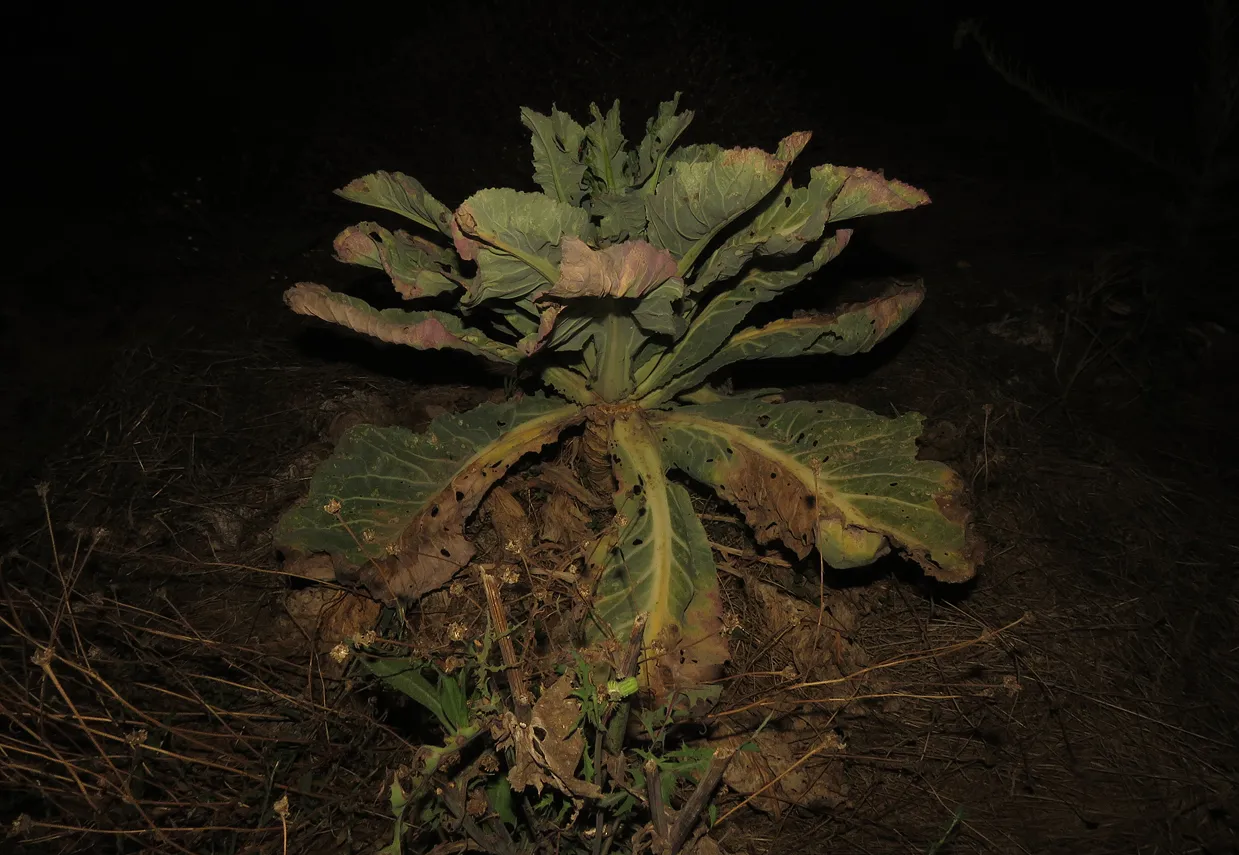
When I reached the final cabbage, the atmosphere was pretty dark all around me.
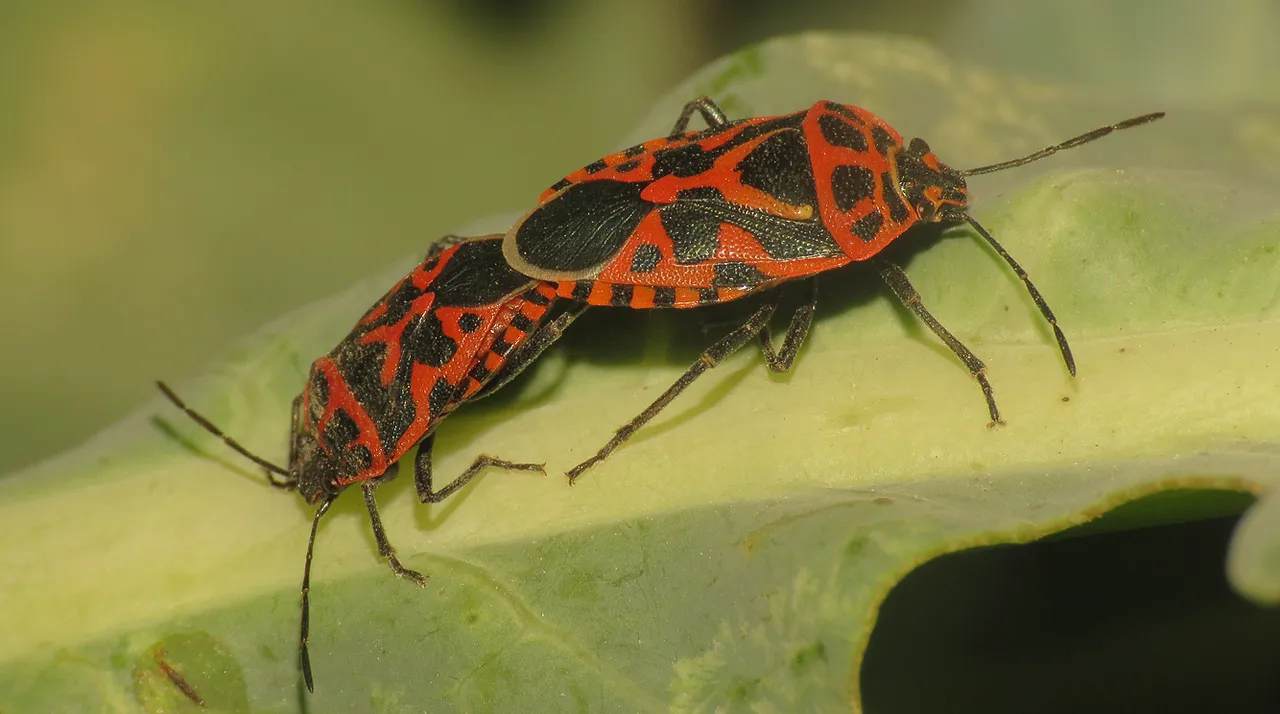
Here I found a mating pare of completely developed adult Eurydema ornata bugs ...
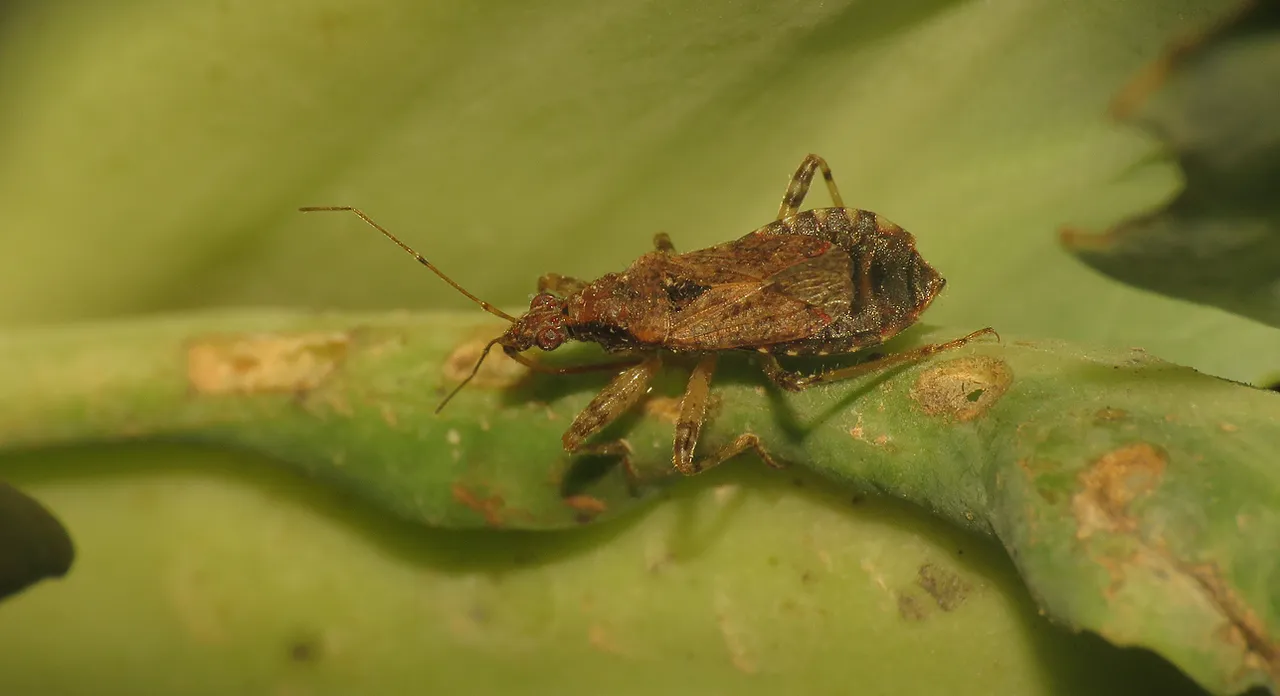
... and this small predatory bug ...
... the Himacerus mirmicoides.
After this last cabbage, I sat in my car that was parked at the edge of the field, and drove away.

As always in these posts on HIVE, the photographs are my work.






